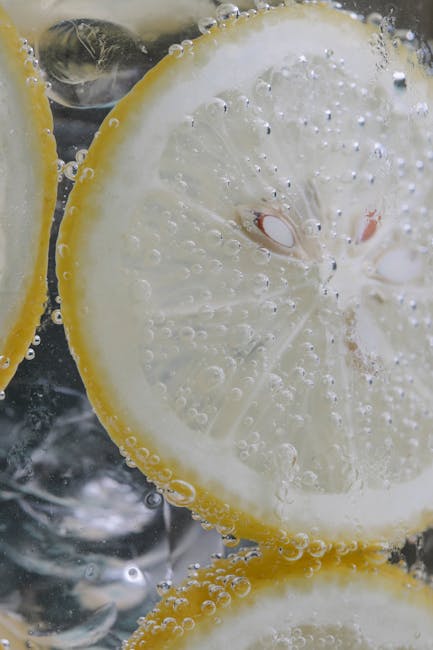The Salt and Ice Cube Trick: A Comprehensive Guide to Instant Cold
The seemingly simple act of combining salt and ice cubes to create a colder-than-ice mixture is a phenomenon many have encountered, whether in childhood experiments or while making ice cream. But how exactly does this seemingly magical trick work, and what are its practical applications? This comprehensive guide delves into the science behind the salt and ice cube trick, explores its various uses, and provides safety precautions to ensure a safe and effective experience.

The Science Behind the Chill: Understanding Freezing Point Depression
The key to understanding why salt and ice create a colder mixture lies in a concept known as freezing point depression. Pure water freezes at 0°C (32°F). However, when you add a solute, such as salt (sodium chloride), to water, it disrupts the water molecules’ ability to form a crystalline structure – the process of freezing. This disruption requires a lower temperature for the water to freeze.
The salt dissolves in the liquid water, forming a solution. The dissolved salt ions (sodium and chloride) interfere with the hydrogen bonds between water molecules. These bonds are crucial for the formation of ice crystals. Because the salt ions get in the way, more energy – in the form of lower temperature – is needed to arrange the water molecules into the ordered structure of ice. Consequently, the freezing point of the saltwater solution drops significantly below 0°C.
The magnitude of freezing point depression depends on the concentration of the solute. The more salt you add, the lower the freezing point will be. This is why a mixture of ice and salt can reach temperatures significantly below 0°C, often reaching as low as -21°C (-6°F), depending on the salt concentration and the surrounding environmental conditions.
Practical Applications: Beyond Just Cold
The salt and ice cube trick has various practical applications, ranging from everyday tasks to more specialized uses:
1. Homemade Ice Cream: A Classic Application
One of the most popular uses of the salt and ice mixture is in making homemade ice cream. The extremely low temperature achieved by mixing salt and ice provides the necessary cold environment to freeze the cream mixture quickly and efficiently, resulting in a smoother, less icy texture.
2. Cooling Drinks: Instant Chilling
In the absence of a refrigerator or cooler, a mixture of salt and ice can rapidly chill drinks. Simply place your drink in a container, surround it with the ice-salt mixture, and watch it cool down significantly faster than with ice alone.
3. Chemical Experiments and Demonstrations: Exploring Freezing Point Depression
In educational settings, the salt-ice mixture is a valuable tool for demonstrating the scientific principle of freezing point depression. It offers a hands-on way to learn about the effects of solutes on the freezing point of solvents.
4. De-icing: Removing Ice and Snow
Salt is widely used for de-icing roads and sidewalks during winter. The salt-ice mixture lowers the freezing point of water, allowing the ice to melt even at sub-zero temperatures. However, it’s important to note that excessive salt can be harmful to the environment and vegetation.
5. Food Preservation (Limited Application):
While not as common, the salt-ice mixture can be used in certain traditional food preservation methods. The low temperature it generates can slow down microbial growth, although this method should be combined with other preservation techniques for effective results.
Safety Precautions: Handling Salt and Ice Responsibly
While the salt and ice cube trick is generally safe, precautions should be taken to prevent potential hazards:
- Avoid Direct Skin Contact: Prolonged exposure to the extremely cold mixture can lead to frostbite. Always wear gloves when handling the mixture.
- Supervise Children: Always supervise children when they are conducting experiments with salt and ice. Explain the potential dangers of frostbite and the importance of safety precautions.
- Proper Disposal: Dispose of the salt-ice mixture responsibly. Excessive salt can be harmful to the environment if not disposed of correctly. Follow local regulations for waste disposal.
- Protective Clothing: Use protective clothing when working with large quantities of salt and ice, especially in colder environments.
- Avoid contact with eyes: The salt solution can irritate the eyes. Wear protective eyewear if necessary.
Variations and Considerations
The effectiveness of the salt and ice trick depends on several factors, including the type of salt used, the ice-to-salt ratio, and the surrounding temperature. Experimentation can reveal the optimal ratios for different applications. Rock salt (coarse-grained sodium chloride) is often preferred for its larger surface area, facilitating better contact with the ice and faster cooling.

Other salts can also be used, but the degree of freezing point depression may vary. Calcium chloride, for example, is often more effective than sodium chloride at lower temperatures. However, it can be more corrosive. It’s essential to consider the specific application and the potential environmental impact of different salts before use.
Conclusion: Harnessing the Power of Freezing Point Depression
The salt and ice cube trick, while seemingly simple, is a testament to the fascinating principles of chemistry and physics. Understanding freezing point depression helps appreciate its versatility in various applications, from culinary delights to scientific demonstrations and practical solutions. By following safety precautions and considering the different factors influencing its effectiveness, you can safely and effectively harness the power of this simple yet potent cooling technique.


